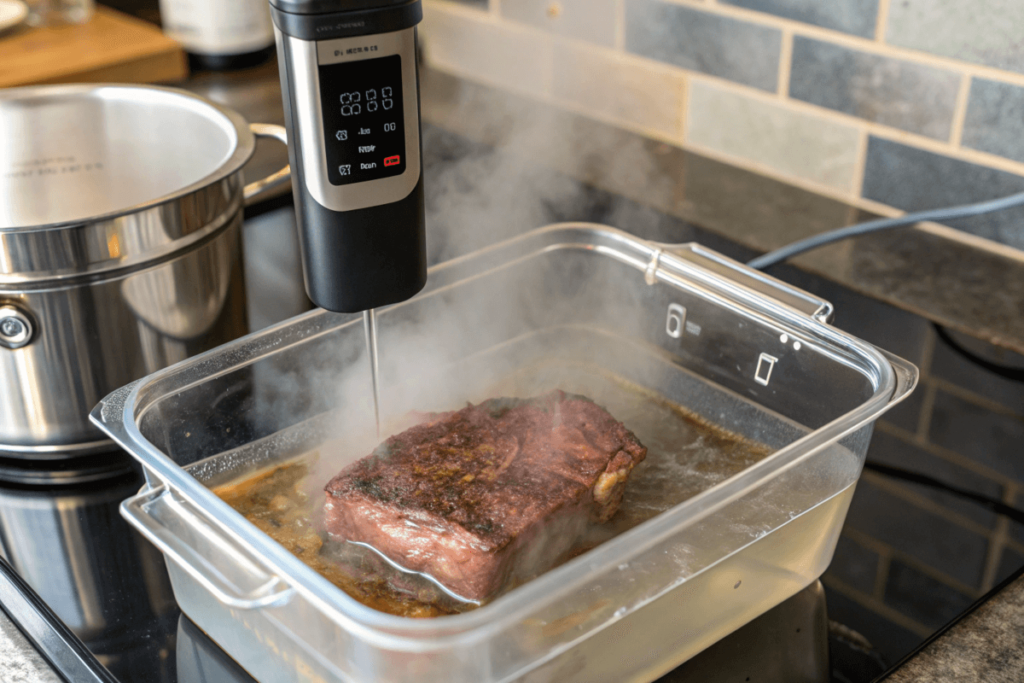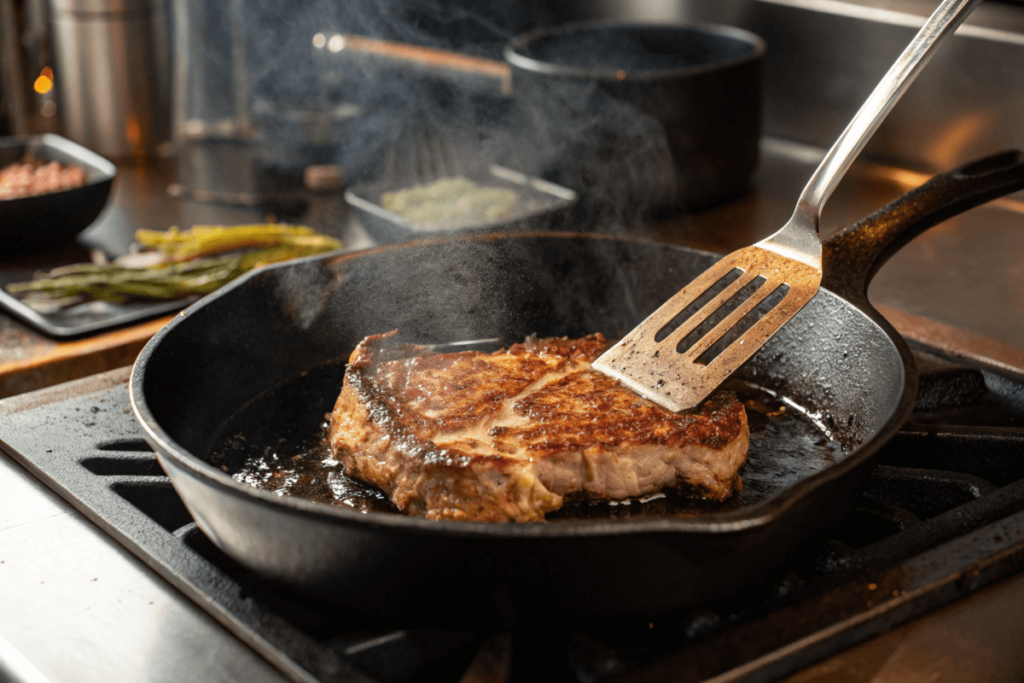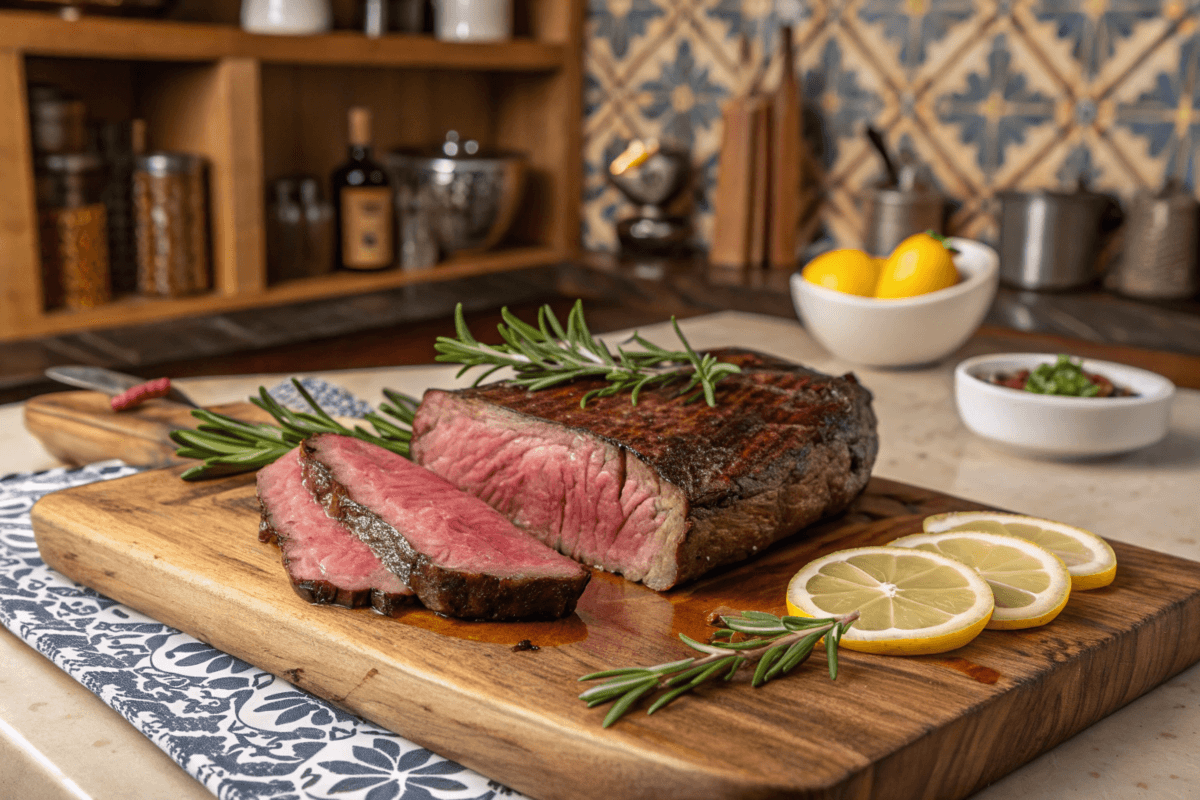What is the Best Way to Heat Up Leftover Steak?
Reheating steak might seem simple, but getting it right is a fine art. A poorly reheated steak can lose its juicy tenderness and turn into something tough and dry—nobody wants that. In this article, we’ll walk you through the best methods to heat up leftover steak, ensuring that it stays flavorful and succulent. From using the oven to the sous vide method, we’ll explore multiple techniques, complete with step-by-step instructions, tips, and even ways to reuse your steak creatively. Whether you’re a culinary novice or a seasoned chef, this guide will help you make the most of your leftover steak.
Let’s dive in, starting with how to prepare your steak for reheating.
Introduction to Reheating Leftover Steak
Why Proper Reheating Matters
If you’re lucky enough to have leftover steak, you probably want it to taste as close to fresh as possible. Steak reheating isn’t just about warming it up; it’s about preserving the flavor, juiciness, and texture. A misstep could mean ruining that prized cut of beef you worked so hard to perfect—or paid top dollar for. The good news is, with the right method, your steak can be just as delightful the second time around.
Reheating leftover steak matters for more than just taste. Warming it up evenly also ensures food safety. Cold spots in improperly reheated meat can harbor bacteria, which nobody wants on their plate. By following tried-and-true reheating methods, you can bring your steak back to life in a way that’s not just delicious but also safe to eat.
Challenges of Reheating Steak Without Drying It Out
The biggest hurdle with reheating steak is keeping it moist while still getting it hot enough. Unlike some foods, steak loses moisture quickly when exposed to high heat, often leaving it dry and unappetizing. Overcooking can also toughen the meat, making each bite a chore instead of a pleasure. It’s a delicate balancing act—too little heat, and your steak stays cold; too much, and it turns leathery.
Each method we’ll explore in this guide has its pros and cons. Whether you prefer using an oven, stovetop, or sous vide, the key lies in understanding your steak’s needs and applying the right techniques to reheat it properly. Stick with us as we break down the science and art behind the best ways to heat up leftover steak!
Preparing Leftover Steak for Reheating
Bringing Steak to Room Temperature
Before diving into the reheating process, it’s crucial to prepare your steak properly. One key step is to bring the steak to room temperature. Taking it straight from the fridge to the heat can cause uneven warming, leaving the interior cold while the exterior overcooks. Let your steak sit out for about 30–45 minutes to ensure it heats evenly. This small step can make a big difference in preserving its juiciness and avoiding the dreaded leathery texture.
For thicker cuts, like ribeye or T-bone, you might need closer to an hour. Place the steak on a plate and cover it lightly to protect it from contaminants while it adjusts to room temperature.
Tips for Maintaining Flavor and Texture
Maintaining your steak’s original flavor and texture is all about preparation. A great tip is to lightly coat the steak with olive oil or melted butter before reheating. This adds a protective layer to help retain moisture. Additionally, seasoning the steak just before reheating can revive its taste, especially if it’s been stored for a couple of days.
When storing leftover steak, always wrap it tightly in foil or place it in an airtight container. This minimizes exposure to air, which can dry out the meat and make reheating trickier. Proper storage ensures your steak tastes as fresh as possible, even after reheating.
For additional steak reheating tips, check out this guide on steak preparation and storage.
Reheating Steak in the Oven
Step-by-Step Oven Method
Using the oven is one of the most popular ways to reheat steak because it allows for slow and even heating. Here’s a step-by-step guide to getting it right:
- Preheat the oven to 250°F (121°C).
- Place the steak on a wire rack over a baking sheet. This setup ensures hot air circulates around the steak, reheating it evenly.
- Pop the tray in the oven and warm the steak for about 20–30 minutes, depending on its thickness. The goal is to bring the internal temperature to 110°F (43°C).
- For a crisp finish, transfer the steak to a hot skillet for a quick sear on both sides.
Pros and Cons of Using the Oven
Pros:
- The oven method is gentle, which means there’s less risk of overcooking.
- It works well for thicker cuts that require a slower approach to reheat evenly.
- Combining the oven with a quick stovetop sear creates a perfectly balanced steak—juicy inside with a crispy exterior.
Cons:
- It’s not the fastest method, which might not suit you if you’re short on time.
- Without proper monitoring, the steak can still dry out.
By following these steps, the oven method can be a game-changer for reheating leftover steak. Plus, it’s versatile enough to handle any cut of meat, ensuring you get the most out of your leftovers. For more insights on this method, visit Tester Recipes’ guide to steak reheating.
Sous Vide Method for Reheating Steak
What Is Sous Vide and Why Use It?
Sous vide, a French cooking technique, is an excellent method for reheating steak if you have access to the equipment. This approach involves sealing the steak in a vacuum-sealed bag and immersing it in a precisely controlled water bath. The low and slow heat helps maintain the steak’s juiciness and flavor, avoiding the common pitfalls of overcooking.
Unlike other methods, sous vide gently brings your steak to the desired temperature without losing moisture. It’s especially great for thicker cuts that need even heating from edge to edge.

Step-by-Step Instructions for Sous Vide
- Set the sous vide machine to 135°F (57°C) for medium-rare or adjust based on your preferred doneness.
- Place the steak in a vacuum-sealed or resealable bag, ensuring no air remains inside.
- Submerge the bag in the water bath and let it heat for 45–60 minutes, depending on the steak’s thickness.
- Once warmed, remove the steak and quickly sear it in a hot skillet for 1–2 minutes on each side to restore its crispy crust.
Advantages and Drawbacks of Sous Vide
Advantages:
- The sous vide method retains the steak’s natural juices and avoids overcooking.
- It provides unparalleled temperature control, making it perfect for premium cuts like filet mignon.
Drawbacks:
- Requires specialized equipment, which may not be readily available.
- It takes longer than other methods, making it less ideal for quick reheating.
While this method might seem complex, it guarantees a perfectly reheated steak every time. For a detailed guide on sous vide cooking, explore this article on precise cooking techniques.
Reheating Steak on the Stovetop
Why a Cast-Iron Skillet Works Best
A cast-iron skillet is a trusted kitchen tool for many cooks. Its ability to retain and evenly distribute heat makes it ideal for reheating steak. This method lets you quickly heat the steak while adding a delicious crust that enhances both the texture and flavor.
Using a skillet also allows you to control the heat directly, ensuring that the steak reheats evenly and stays moist.

Step-by-Step Stovetop Instructions
- Preheat the skillet on medium heat for about 2 minutes.
- Add a small amount of olive or grapeseed oil and let it heat until it just begins to shimmer.
- Place the steak in the skillet and sear each side for 1–2 minutes, turning frequently for even reheating.
- For thicker cuts, lower the heat and cover the skillet for a few minutes to ensure the center warms through.
Benefits and Limitations of the Stovetop Method
Benefits:
- Quick and effective, especially for thin cuts of steak.
- Adds a crispy, flavorful crust that enhances the steak’s overall appeal.
Limitations:
- If overheated, the skillet can dry out or scorch the steak.
- Requires careful monitoring to prevent overcooking.
The stovetop method is a fast and efficient way to reheat your steak without sacrificing flavor or texture. If you’re interested in pairing reheated steak with a side dish, check out our recipe for perfectly roasted vegetables to create a complete meal.
Creative Ways to Use Reheated Steak
Serving Suggestions: Tacos, Salads, and Sandwiches
Reheated steak doesn’t have to be dull. In fact, it can become the star of many dishes! One of the best ways to make the most of your reheated steak is to slice it thinly and add it to tacos. Pair it with your favorite toppings like guacamole, salsa, and shredded cheese for a quick and satisfying meal.
Another great option is to use the steak in a hearty salad. Combine mixed greens, cherry tomatoes, blue cheese crumbles, and a tangy vinaigrette to create a delicious steak salad. If you’re in the mood for comfort food, use reheated steak as the filling for a steak and onion sandwich. Toasted bread, caramelized onions, and a touch of mustard will take your leftovers to the next level.
Enhancing Flavor with Sauces and Sides
To elevate the flavor of reheated steak, serve it with a flavorful sauce like chimichurri or creamy peppercorn. These sauces not only complement the steak but also add a fresh twist to your meal. For sides, consider pairing your steak with roasted vegetables, mashed potatoes, or even a baked sweet potato for a balanced and filling plate.
Whether it’s repurposed for tacos, salads, or sandwiches, the possibilities are endless when you creatively reuse reheated steak. If you’re wondering what is the best way to heat up leftover steak?, these ideas prove that reheating isn’t just about restoring—it’s about reinventing!
Safety and Storage Tips for Leftover Steak
How Long Can Leftover Steak Be Stored?
When storing leftover steak, it’s important to follow food safety guidelines to avoid spoilage. According to the USDA, cooked steak can be safely stored in the fridge for up to four days. Make sure to wrap it tightly in plastic wrap or place it in an airtight container to keep it fresh.
For longer storage, you can freeze the steak. Be sure to use freezer-safe bags or containers and label them with the date. Properly frozen steak can last up to three months without a significant loss in quality.
Signs of Spoilage to Watch For
Even with proper storage, it’s essential to check your steak for signs of spoilage before reheating. A sour smell, slimy texture, or discoloration are clear indications that the steak is no longer safe to eat. Always err on the side of caution and discard any questionable leftovers.
Reheating steak safely is just as important as finding what is the best way to heat up leftover steak?. By storing it correctly and knowing when to let it go, you can enjoy your leftovers worry-free.
FAQs About Reheating Steak
Does Reheated Steak Taste as Good as Fresh?
One common concern is whether reheated steak tastes as good as it did the first time. While it’s hard to replicate the exact flavor and texture of freshly cooked steak, the right reheating method can get pretty close. Techniques like sous vide or using a skillet on the stovetop help preserve the steak’s natural juiciness and flavor. If you’ve been wondering what is the best way to heat up leftover steak?, the answer lies in choosing a method that minimizes moisture loss and enhances the steak’s original taste.
Can You Reheat Steak More Than Once?
While it’s technically possible to reheat steak more than once, it’s not recommended. Repeated reheating increases the risk of overcooking and drying out the meat. Additionally, every cycle of reheating reduces the steak’s overall quality. For best results, only reheat what you plan to eat at one time, and store the rest properly for later use.
What Tools Do You Need for the Best Results?
To reheat steak effectively, you’ll need basic kitchen tools like a skillet, an oven, or a sous vide machine. A meat thermometer is also helpful for ensuring the steak reaches the perfect temperature without overcooking. Each method requires slightly different tools, but all aim to answer the question what is the best way to heat up leftover steak? with delicious results.
Is Microwaving Steak a Good Idea?
While convenient, microwaving steak is generally not the best option. Microwaves tend to heat unevenly, leaving parts of the steak dry and rubbery. If you must use a microwave, add a splash of broth or water, cover the steak, and heat it on a low setting in short intervals. This helps retain some moisture, but it’s far from ideal.
Conclusion and Final Thoughts
Reheating leftover steak doesn’t have to be a challenge. With methods like the oven, stovetop, and sous vide, you can revive your steak without losing its original charm. Each approach has its strengths and is suited for different preferences, but they all aim to provide an answer to what is the best way to heat up leftover steak?.
Additionally, proper preparation and storage are crucial for maintaining quality. From bringing the steak to room temperature to wrapping it tightly in plastic or foil, these steps set the foundation for successful reheating. Pairing your reheated steak with creative sides or sauces can also elevate your meal, proving that leftovers can be just as enjoyable as freshly cooked dishes.
Whether you’re reheating for a quick lunch or transforming your steak into a whole new dish, the tips shared in this guide will help you make the most of your leftovers. Now, it’s your turn to put these methods to the test and enjoy your steak in all its glory!

